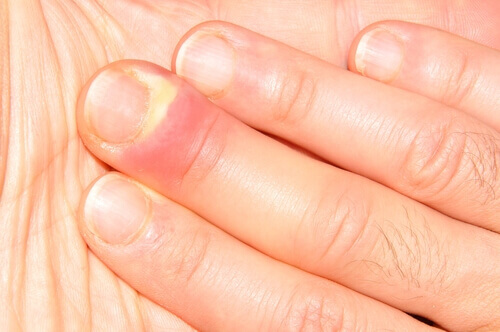
What is paronychia? It’s a skin infection affecting the fingernails and toenails caused by Candida bacteria. Paronychia infection varies in its intensity and duration of symptoms, with some infections developing slowly over the course of a few weeks, to infections that flare up suddenly, and come and go in a few days.
Symptoms of paronychia are easy to identify, and reasonably easy to treat, with persistent infections being a rare occurrence and typically only occurring in the toenail. If left untreated, paronychia infection can result in significant inflammation of the infected area, causing the loss of your fingernail.
Paronychia comes in two different types; acute and chronic. The type of bacteria causing the infection determines the rate at which symptoms develop, as well as their intensity.
An acute paronychia infection typically occurs suddenly in the fingernails and goes away after a few days with no lasting symptoms. However, chronic infection usually affects the toenail, and happens at a much slower pace, and can last for months or years in some cases.
Here are eight signs that your nails have a paronychia infection.
1. Redness and Swelling Around the Nailbed
The first noticeable symptom of paronychia infection is the development of redness and slight swelling around the nail. As the condition progresses, the fingertip or toe starts to turn bright red, as the infection spreads. In some cases, the swelling may lead to a tight feeling in the finger or toe that begins to throb.
As the infection attacks the nailbed, the swelling and discoloration continue. If left untreated, the skin may start to turn reddish-purple, and symptoms of pain increase as the inflammation causes issues with surrounding tissues.
At this stage of the infection, it’s possible to confuse paronychia with a stubbed toe or a damaged finger that experienced some other form of trauma that you were unaware of – such as trapping your finger in a door or something similar.
When the swelling and discoloration start to affect the entire fingertip or toe that the affected individual may realize they are dealing with a paronychia infection.


